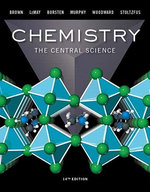?When solutions containing silver ions and chloride ions are mixed, silver chloride precipitates \(\mathrm{Ag}^{+}(a q)+\mathrm{Cl}^{-}(a q)
Chapter 5, Problem 5.45(choose chapter or problem)
When solutions containing silver ions and chloride ions are mixed, silver chloride precipitates
\(\mathrm{Ag}^{+}(a q)+\mathrm{Cl}^{-}(a q) \longrightarrow \operatorname{AgCl}(s) \quad \Delta H=-65.5 \mathrm{~kJ}\)
(a) Calculate \(\Delta H\) for the production of 0.450 mol of AgCl by this reaction.
(b) Calculate \(\Delta H\) for the production of 9.00 g of AgCl.
(c) Calculate \(\Delta H\) when \(9.25 \times 10^{-4}\) mol of AgCl dissolves in water.
Text Transcription:
Ag+(aq) + Cl -(aq) \longrightarrow AgCl(s) \Delta H = -65.5 kJ
\Delta H
9.25 X 10-4
Unfortunately, we don't have that question answered yet. But you can get it answered in just 5 hours by Logging in or Becoming a subscriber.
Becoming a subscriber
Or look for another answer
